Intel Core M: Everything you need to know
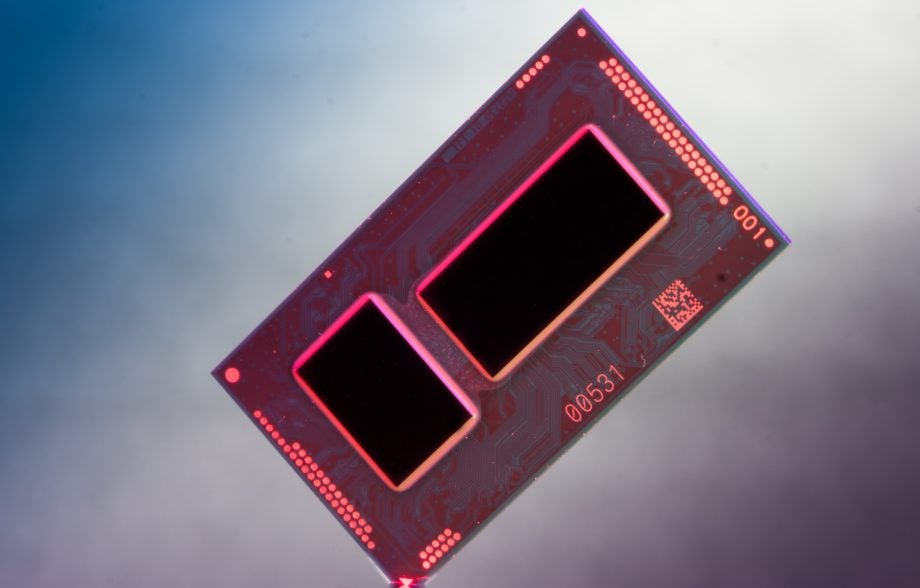
Apple has just unveiled its refreshed line of 12-inch MacBook laptops, which feature new and more powerful Intel Core M processors. Here’s everything you need to know.
Intel Core M is a huge leap in laptop processor technology. Not only does it allow manufacturers to create laptops with super-thin fanless designs, but it finally unlocks the sort of performance laptop buyers expect. Gone are the days of piddly processors that can barely handle a spreadsheet: with Core M you can absolutely fire up lots of tabs in your web browser and work on email at the same time.
It all means manufacturers can design even thinner, lighter and silent laptops without compromising on performance or battery life.
Related: What about Core I? We explain Intel’s jargon
One of the first products to really show the potential of Core M was the Asus UX305, a 13-inch laptop that weighs just 1.2kg and is 12mm thick, yet it has nearly 12 hours of battery life. Then of course there’s the latest MacBook, which raised the stakes even further by weighing just 900g, being impossibly thin and yet still having 9 hours battery life.
More recently we’ve seen the Microsoft Surface Pro 4, the entry-level model of which is powered by one of the new Skylake Core M chips.
So what makes Core M tick? And what’s the difference between the Broadwell and Skylake generations?
Related: Best Laptops, Ultrabooks and Hybrids
Intel Core M: What is it?
Intel is well known for its ‘tick-tock’ launch strategy, where advancements in manufacturing processes one year are followed by big changes to processor designs the next. The Broadwell family of chips introduced in 2014 was ostensibly a ‘tick’ that marks the move from 22nm to 14nm manufacturing processes (although it could be argued that the all-new Core M family was therefore both ‘tick’ and ‘tock’).
The current Skylake standard is a ‘tock,’ with an all-new microarchitecture but using the same 14nm process as Broadwell. Sure enough, there’s a new line of Core M chips that are now making their way into 2-in-1s and notebooks.
This reduction in the size of the transistors that make up the processor results in chips requiring less energy to do their thing, and less energy used means longer battery life and less heat.
However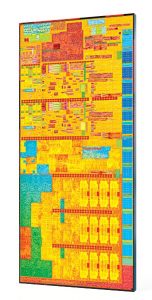 , this move to 14nm alone would not be enough to make for a chip that doesn’t require a fan to keep it cool, so it also has reduced specs compared to normal laptops chips. Things like clock frequency and the performance of the GPU are kept low to make sure power-draw and temperatures don’t get too high.
, this move to 14nm alone would not be enough to make for a chip that doesn’t require a fan to keep it cool, so it also has reduced specs compared to normal laptops chips. Things like clock frequency and the performance of the GPU are kept low to make sure power-draw and temperatures don’t get too high.
The key being that whereas these compromises would previously have made for inadequate performance, the inherent power saving of the move to 14nm provides enough head room to allow for a design that ideally balances power saving with providing enough speed for satisfactory performance.
The result is a processor that can be passively cooled yet provides performance on par with processors found in slim and light laptops of three or four years ago. In other words, if you’ve got a 2011/2012 MacBook Air then you’ll know what sort of performance the 2015 MacBook will provide. It’ll just do it in a much smaller, thinner device.
Delving a little deeper into exactly what Core M offers, its headline figure is a Thermal Design Power (TDP – read max power consumption) of just 4.5W. This compares to around 10-15W for a typical laptop processor and 50-100W for desktop processors.
Previously this level of power draw was only possible in severely under-powered Atom processors, such as the Bay-Trail line, which were really only good for more simple tablet-type devices. Core M really is the first processor to bridge the gap between ultra-low TDP and acceptable laptop performance.
Broadwell and Skylake
There are a number of Core M chips split across two generations – those built on the Broadwell architecture (which includes the new MacBook) and the more recent Skylake architecture.
The original Broadwell chips boil down to five types. There’s the M-5Y10 chips, which are all clocked at 800MHz with a 2GHz maximum Turbo, and they’ve got HD Graphics 5300 cores clocked up to 800MHz.
Then there’s the M-5Y31 that starts at 900MHz and turbos to 2.4GHz with a max graphics speed of 850MHz. Next is M-5Y51 (1.1GHz – 2.6GHz, 900MHz) and M-5Y70 (1.1GHz – 2.6GHz, 850MHz) and finally the M-5Y71 which runs at 1.2GHz, turbos to 2.9GHz and the graphics top out at 900MHz.
The latter is the chip being used in the new MacBook, which means it offers loosely comparable performance to previous MacBook Airs, but graphics performance is still be some way down.
Intel’s Skylake Core M processors, announced in September of last year, have a similar 4.5-watt TDP to the Broadwell chips, but come with improved Intel HD Graphics 515 that is an estimated 41 percent faster, and which can handle modern 4K video standards. You also get even better battery life.
The Skylake family is broken down into three main families with increasing performance: Core m3, m5 and m7. There are four chips available across these four families. There’s a 900MHz m3, two 1.1GHz Core m5 chips, and a 1.2GHz Core m7.
All in all, the advancement between the generations is considerable, but you’re still looking at the lower end of ‘full’ laptop performance.
Intel Core M: Performance
We’ve tested a few Broadwell Intel Core M products in our time, such as the Asus UX305. In Geekbench, that device got a score of 4098, while last year’s MacBook Air 13 scored 5401. Another example is the UX305 scored 111cp in the latest Cinebench benchmark, which is only a tad faster than the 99cp of our Asus UX31E ultrabook from 2011.
Where this is felt most acutely is in graphics, where the Intel HD5300 graphics processor of the Broadwell Core M is a throwback to the performance of several years ago. Again this is reflected in our benchmarks where the UX305 could manage just 9.3fps in Unigine Heaven at 1,366 x 768 with basic graphics settings. In comparison the Microsoft Surface Pro from 2012 managed 12.5fps.
As such modern, 3D gaming is just not viable on these chips, especially not at the native resolution of the screens many of these lovely new laptops are using.
Initial Skylake benchmarks appear to be a notable improvements. We’ve seen Geekbench results showing as much as a 20 percent improvement for single and multi-core scores – but you still wouldn’t use such devices for high-end gaming.
Before we put you off too much, though, realise that this is precisely the sweet-spot of performance Intel was aiming for. Yes, it’s a step back from Ivy Bridge but it is sufficient for general day-to-day computing and it’s also why the MacBook can weigh just 900g and still have nearly 10 hours battery life.
Intel Core M: Impressions so far
The Asus Zenbook UX305 impressed us, and proved to be one of the best laptops of 2015. This super-slim 13-inch device comes with astonishing battery life of nearly 12 hours, though it does achieve this by using the lowest spec Core M part so performance is quite basic.
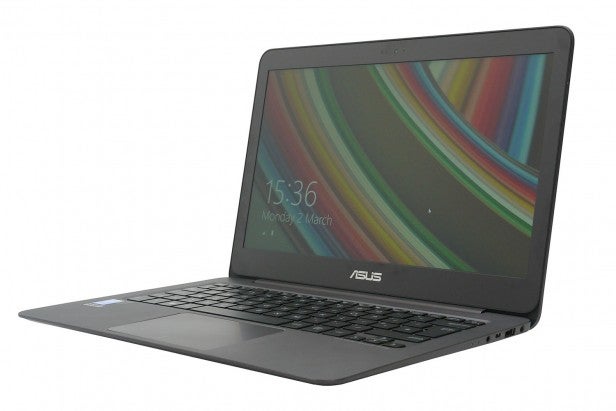
Meanwhile, the Asus Transformer Book T300 Chi is a well made tablet-notebook hybrid. It won’t be taking the MacBook Air on for sheer style or functionality (a lack of full-sized USB ports sees to that), but it’s compact, has a great screen, and benefits from Core M’s power and efficiency.
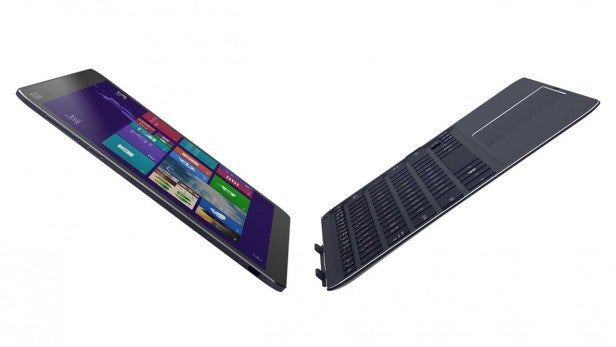
Now the new MacBook comes with a 12-inch screen and Retina screen and with Intel Core M. This means it is is just 13.5mm thick, fanless and weighs just two pounds (900g). That’s far thinner and lighter than the previous generation MacBook Air. The latest version, announced for 2016, drops the previous-generation Broadwell silicon and replaces it with newer, more efficient Skylake architecture in the form of Core m3, m5 and m7 chips. Apple reckons there’ll be an extra hour of battery life to be gained from the new hardware, as well as better graphics performance from Intel HD Graphics 515.
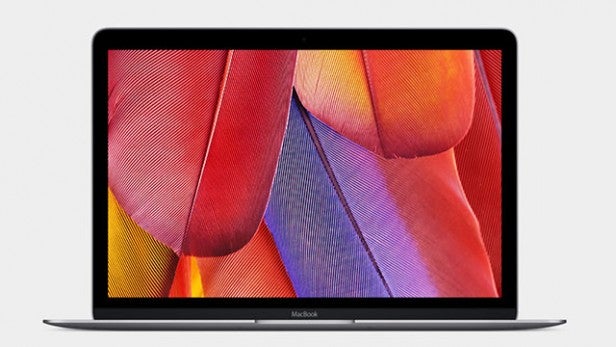
For an example of what that newer Skylake chip can do, look no further than the entry-level Surface Pro 4. Microsoft’s hybrid was one of our favourite laptops of 2015, though it’s worth providing the major caveat that we reviewed the i5 model – a much noisier yet much more capable machine.
Still, by all accounts the m3-packing Surface Pro 4 is a well balanced and beautifully discrete portable with few real world concessions.
Should I buy Intel Core M?
Deciding whether a Core M product is for you is actually quite a tough call. For the most part they offer perfectly acceptable performance, great battery life and a new level of thin and light laptop and hybrid designs.
However, for more heavy users, the step down in performance – especially if you like to play the odd game on your laptop – means you’ll probably want to be looking elsewhere, whether it’s a MacBook Air or any other product that runs a Core i5/i7 product from the Broadwell or Skylake selection.
What we will say is that the newer Skylake design provides a notably better balance of performance and low power consumption than Broadwell, so more demanding users should be sure to check that the newer chip is listed on the spec sheet of their next device.
Intel Core M: A Bright Future
Core M represents a great leap forward for ultra-portable laptops and hybrid devices, with it finally bringing true laptop-class performance to the passively-cooled product space. This opens up opportunities for a new level of thinness and lightness for these devices.
However, while performance is laptop-class, it’s laptop-class from about four or five years ago. So while the latest MacBook is even thinner and lighter than the MacBook Air, and offers similar battery life, its performance is more in-line with models several generations earlier.
The Surface Pro 4’s entry-level model, meanwhile, finds itself cut adrift from the rest of the range in performance as well as price.
Core M is all about bringing that ‘good enough’ level of performance to a new type of product.
Still, while there is some compromise in opting for a Core M-class laptop or hybrid computer there’s no doubting it’s an exciting new era and we can’t wait to see what new products arrive based on the technology.


